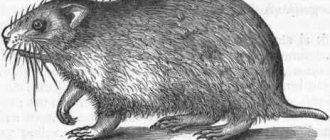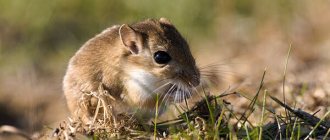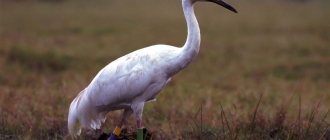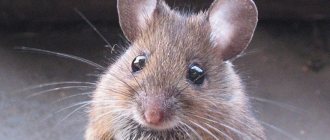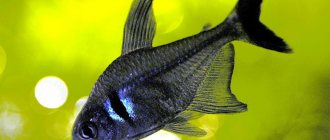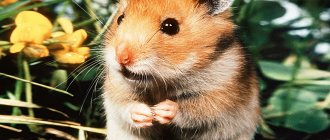Photo: placepic.ru At first glance, swifts resemble swallows, but in reality they do not have much in common. This is a true champion in speed of movement through the air. There are recorded figures of 170 km/h! How do you like these impressive numbers? And if you want to learn more about swifts, this article is especially for you!
general description
Swifts are amazing birds that can neither walk nor swim, but they have no equal in flight. They live in flocks, and today they are increasingly found in cities.
Appearance of a swift
Despite their external resemblance to swallows, they have no species relationship. In addition, swifts fly completely differently: they are faster, but not as maneuverable. And they never sit on wires.
The plumage of swifts is gray, with black and white splashes. The colors of males and females are almost identical, so it is difficult even for professionals to distinguish them. The average body length is about 20 cm, and at the same time they have a large head and large black eyes, which help in hunting.
The mouth opening of swifts is wide, but the beak is small. The paws are small, with four toes pointing forward. They cannot walk normally on the ground, but they cling perfectly even to steep rocks. The wingspan reaches 55 cm, while they are elongated and slightly curved.
Photo: zen.yandex.ru
Takeoff
Swifts have very short small legs and a large wingspan relative to the body. Therefore, they practically cannot take off from a flat horizontal surface - the wings simply hit the plane. They definitely need a little elevation.
Photo: beesona.ru
Maneuverability
The maneuverability of swifts ensures their amazing ability to use their wings asynchronously. As long as one wing moves faster than the other, the bird is able to take the sharpest turns without slowing down.
Photo: localfeed.ru
How long do swifts live?
Life expectancy is determined by the species. Black swifts, common in our latitudes, live 8-9 years. But long-lived individuals are known, living up to 15-20 years.
Photo: krasivosti.pro
Where does it live?
Swift can be seen in almost every corner of the planet. The bird lives not only in very cold climatic zones. Swifts live in both forest and open areas.
Generally, swifts like to live in large cities or on coastal cliffs, where it is convenient for birds to nest. Swifts live in large flocks. Large colonies of these birds, consisting of several thousand pairs of swifts, can be seen in the city or in the mountains.
Among the numerous species of swifts, sedentary and migratory populations are distinguished. But in any case, the activity of these birds does not decrease from morning to evening.
Swifts spend almost all their time in flight; birds sleep at night for only a couple of hours. The Swifts' flying machine is almost perfect and allows them to travel hundreds of kilometers. Swifts seem to never tire.
Types of swifts
There are several dozen species of swifts, and almost all of them are quite similar. Let's look at a few basic ones!
Black swift
This is a European species, and it is the one that is most often found in our latitudes. The black swift eats, drinks and even sleeps in the air, flying tens and hundreds of thousands of kilometers before landing for the first time.
Photo: petra-martin.livejournal.com
White-bellied Swift
You can recognize it not only by the white spot on its belly, but also by its size. This is a fairly large species weighing up to 125 g and with a wingspan of up to 58 cm.
Photo: m.ok.ru
White-rumped Swift
As with the white-bellied, the main feature is hidden in the name. This species is distinguished by a wide white stripe on the back where the body gradually turns into the tail.
Photo: north.eurasia.birds.watch
Pale swift
The pale swift resembles a tiny torpedo due to the shape of its body. The long sickle-shaped wings reach up to 18 cm in span, and this with a total weight of just over 30 g.
Photo: setaim.ru
tree swift
He is also crested. It lives in Asian and Indian forests and is distinguished by more variegated colors and a long forked tail. The crest is clearly visible on the head.
Photo: popugai-tut.ru
Waxwing (60 photos): description of the bird, where it lives and what it eats
Number and population
In the countries of Eastern Europe and Northern Asia, within the already established distribution area, black siskins are found everywhere in numerous groups. On the territory of Siberia, a significant number of this species is found in pine landscapes, it can inhabit forests, but the population limitation is noted in taiga territories.
In recent years, black siskins are increasingly found in large numbers in urban areas adjacent to vast natural water areas. Especially many individuals are observed in St. Petersburg, Klaipeda, Kaliningrad and such large southern cities as Kyiv and Lvov, as well as Dushanbe.
Lifestyle
The lifestyle of swifts seems simply fantastic. How can you sleep in the air? But these birds succeed! Moreover, they rest safely for several hours in a row, occasionally flapping their wings. Cases have been recorded when the swift did not land on the ground for more than six months.
Swift habitats
In nature, swifts are distributed almost everywhere, except for remote islands and Antarctica. They practically never fall to the ground, because only a few species can safely take off from a horizontal surface.
Photo: redbook.su
Diet
Swifts catch their prey in flight, so they feed accordingly on small flying insects. They have practically no alternatives, so when the weather is bad they are forced to look for a new place.
Photo: classpic.ru
Wintering
Those species of swifts that live in middle and northern latitudes go to warmer climes for the winter. These are mainly black swifts, and they migrate to Africa and Asia in small flocks at the end of October.
Photo: placepic.ru
Anabiosis
These birds have poorly developed thermoregulation, so when there is a sharp cold snap, they fall into a kind of suspended animation. Body temperature drops to 20 degrees, and the condition lasts up to 10 days. This is also why they are forced to fly away for the winter, so as not to freeze completely.
In addition, if the swift is too hungry, it also hibernates, and thus can survive unfavorable days. The chicks wait for their parents to return.
Photo: mos.ru
Jay (50 photos): description of the bird, what it eats and where it lives
Habitats
Swifts can easily fly from place to place. Even long distances are not significant for these birds.
A lot of them live in the western regions of China and Siberia, as well as in Spain. This bird also lives in more northern areas, for example, in Finland, Norway and the subarctic zone of Russia. They are found among the birds of the Moscow region .
They also love southern regions, for example, Turkey, Algeria, Lebanon, Morocco, Israel.
The breeding area of this bird can cover the whole of Europe and Central Asia. No settlements of swifts have been observed in India, Korea, Australia and most of China.
These birds live quite well on the equator, and for the winter they like to settle in the southern regions of Africa.
Reproduction of swifts
Swifts hide their nests in cracks and other hard-to-reach places. In cities, they mainly settle on the roofs of high-rise buildings. Most often, upon arrival from wintering, they return to their original place and restore the nest.
By the end of April, the female lays 2-4 eggs, which are then incubated by both parents in turn. They hatch in turns, due to which the eldest chick always gets an advantage. Surprisingly, the nimble swift catches up to 4 thousand insects for its chicks per day. If there is not enough food, swifts throw the remaining eggs out of the nest.
The incubation period is short - up to 16 days, and the female creates up to 4 clutches per season. Depending on weather conditions, the chicks leave the nest within 1-1.5 months.
Photo: fishki.net
What does it eat?
— Advertising —
The main diet of swifts consists of insects flying through the air. Therefore, both the food and lifestyle of these birds are closely related to weather conditions. For example, when insects disappear due to the onset of cold weather, swifts change their place of residence - they go to wander in search of food.
When swifts are hungry, their body temperature drops significantly, ending in hibernation, or “trance sleep.” Thanks to this adaptation of the body, swifts are able to withstand hunger from one to ten days. Young chicks use "trance sleep" to wait for their parents as they fly long distances in search of food.
Natural enemies of swifts
Due to the fact that the swift spends most of its life in the air, and even there it is amazingly fast, it has almost no enemies. The only dangerous enemy is the nimble bird of prey, the Hobby. The rest simply can’t keep up with him!
Photo: zooblog.ru
Thrush (50 photos): description of the bird, what it eats and where it lives
Swift - bird photo
It is almost impossible to catch a calmly sitting swift in order to get a good look at it. That's why we have prepared a large photo selection for you!
Photo: otvet.mail.ru
Photo: faunistics.com
Photo: matushka-priroda.ru
Photo: placepic.ru
Photo: rsute.ru
Photo: novosti33.ru
Photo: ok.ru
Photo: placepic.ru
Photo: birds.kz
Photo: funart.pro
Photo: north.eurasia.birds.watch
Photo: sibirds.ru
Photo: mexa1.ru
Photo: pikabu.ru
Photo: in.pinterest.com
Photo: placepic.ru
Photo: sibirds.ru
Photo: erbirds.ru
Photo: sergvoroninflay.livejournal.com
Photo: story.foto-tula.ru
Photo: pinterest.ru
Photo: seo.org
Photo: subscribe.ru
Photo: placepic.ru
Did you like the post? Subscribe to our channel in Yandex.Zen, it really helps us in our development!
